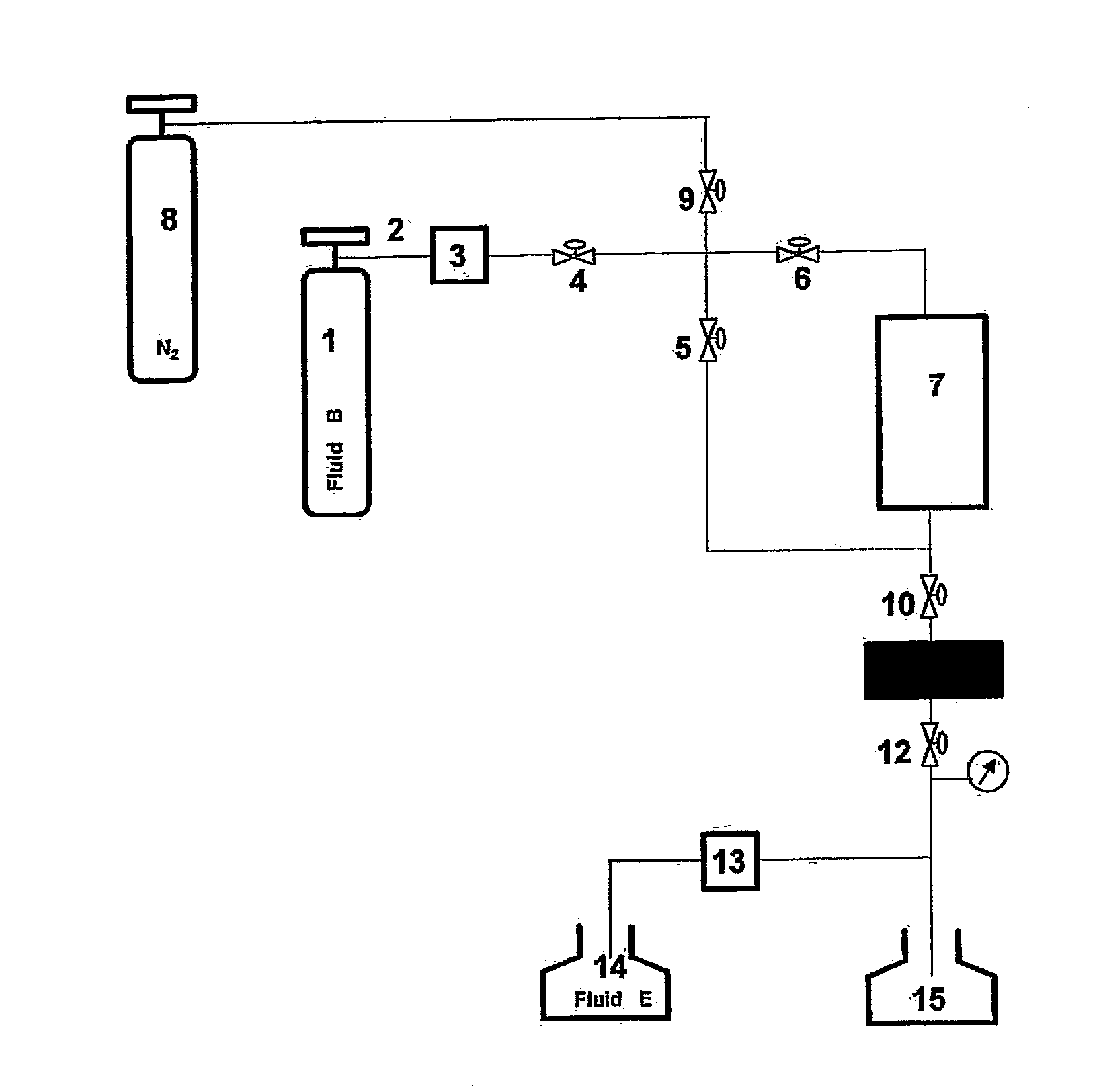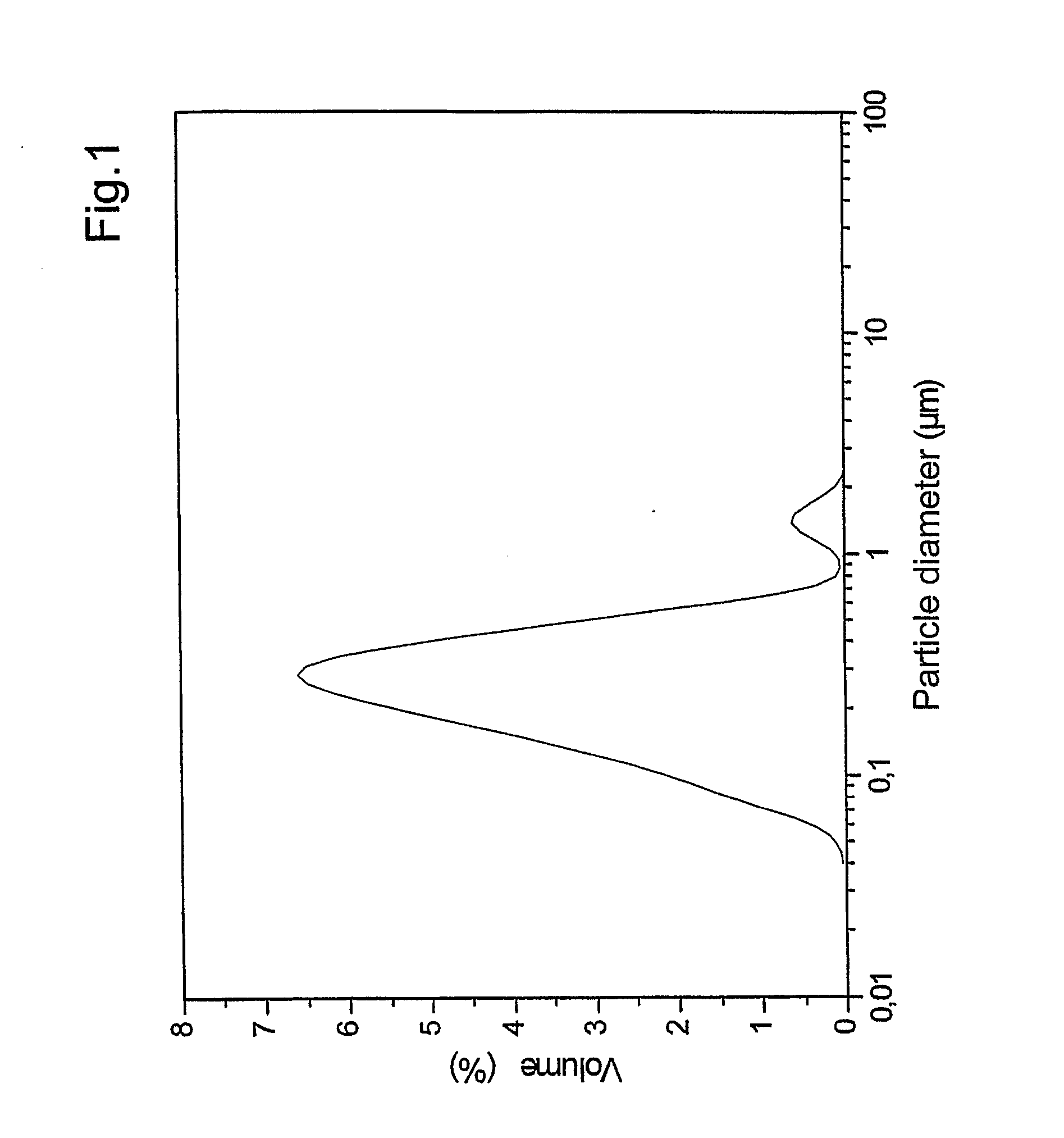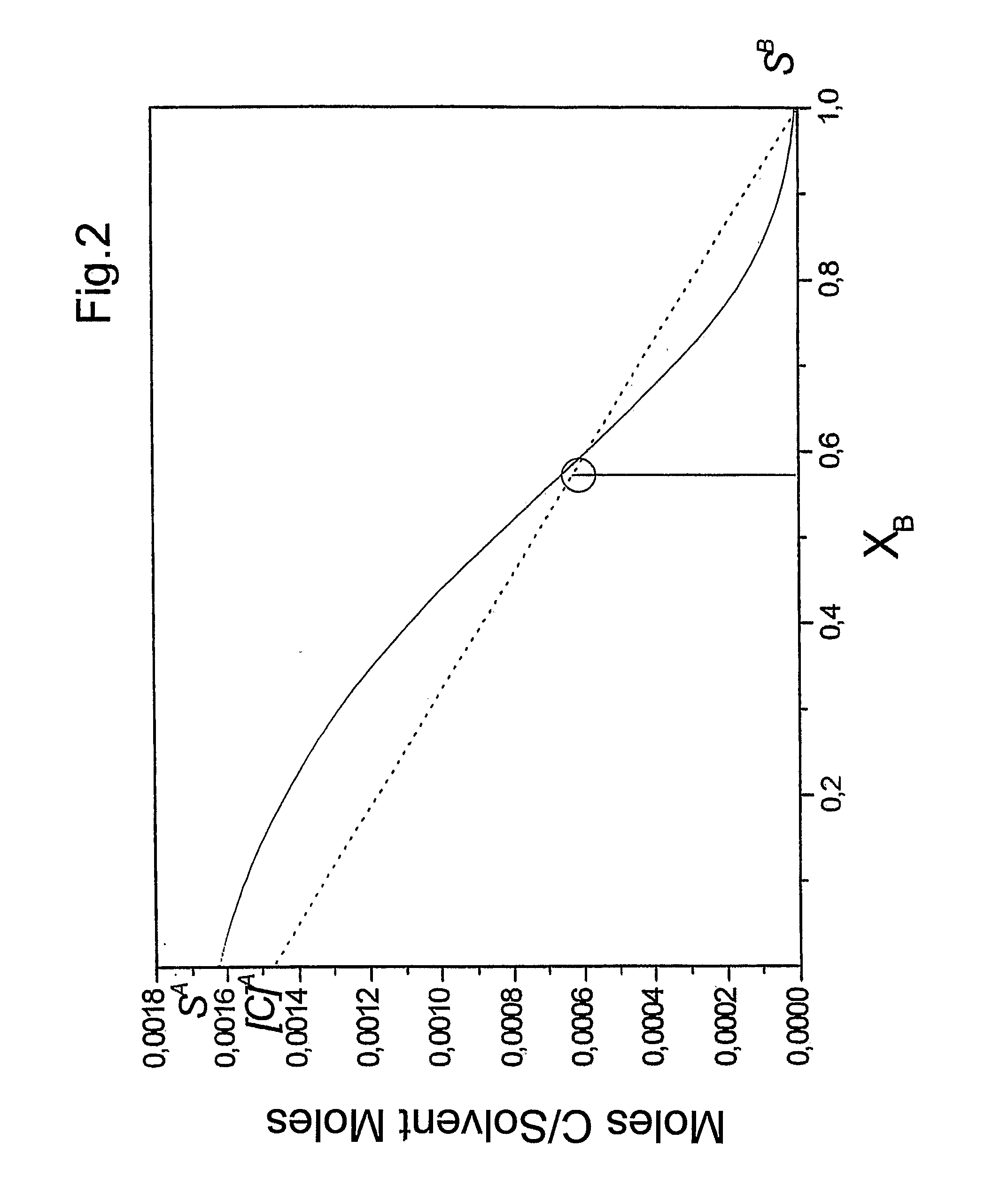Method For Obtaining Micro- And Nano- Disperse Systems
a nano- and nano-disperse technology, applied in the field can solve the problems of large energy consumption and complex preparation methods of micro- and nano-disperse systems, and achieve the effect of low solubility
- Summary
- Abstract
- Description
- Claims
- Application Information
AI Technical Summary
Benefits of technology
Problems solved by technology
Method used
Image
Examples
example 1
Obtaining a Nanosuspension of Cholesterol in Water by the Method of the Invention. (In the Presence of Tween 80 Surfactant in the Initial Fluid E, in this Example Water).
[0094] 1240 mL of a solution of the compound cholesterol in acetone with a concentration of 90% relative to saturation is placed in a mixing reactor 7 of 2 L capacity. To this solution C02 is added at a flow of 7 kg / h until the pressure of the reactor 7 reaches 100 bar. The temperature is kept constant at 35° C. throughout the entire process. The new cholesterol-acetone-CO2 mixture is left to stabilise at 100 bar and 35° C. for 10 minutes (see FIG. 7). The C02 supply is cut off and the addition of N2 commenced through the top part of the reactor through valve 6, keeping the pressure and temperature constant. Depressurisation of the solution, with consequent rapid evaporation of the C02 and sudden cooling of the solution, homogeneously at all points thereof, takes place when valve 12 is opened. This large, sudden an...
example 2
Obtaining a Nanosuspension of Solvent Blue 35 Colorant in Water by the Method of the Invention. (In the Presence of Tween 80 Surfactant in the Initial Fluid E, in this Example Water).
[0095] 590 mL of a solution of the colorant “solvent blue 35” in acetone with a concentration of 80% relative to saturation is placed in a mixing reactor 7 of 2 L capacity, of the configuration shown schematically in FIG. 6. To this solution C02 is added at a flow of 7 kg / h until the pressure of the reactor 7 reaches 100 bar. The temperature is kept constant at 25° C. throughout the entire process. The new “solvent blue 35”-acetone-C02 mixture is left to stabilise at 100 bar and 25° C. for 10 minutes (see FIG. 9). The C02 supply is cut off and the addition of N2 commenced through the top part of the reactor through valve 6, keeping the pressure and temperature constant. Depressurisation of the solution, with consequent rapid evaporation of the C02 and sudden cooling of the solution, homogeneously at al...
example 3
Obtaining a Microsuspension of Solvent Blue 35 Colorant in Water by the Method of the Invention.
[0096] Starting With an Initial Mixture A in Suspension Form.
[0097] This Example illustrates the obtaining of a suspension by the method of the invention, in which the initial concentration of compound C in the mixture A [C]A exceeds SA.
[0098] 1636 mL of a suspension of “solvent blue 35” colorant in acetone with a concentration of 114% relative to saturation is placed in a mixing reactor 7 of 2 L capacity, of the configuration shown schematically in FIG. 6. To this solution C02 is added with a flow of 7 kg / h until the pressure of the reactor 7 reaches 100 bar. The temperature is kept constant at 25° C. throughout the entire process. The new “solvent blue 35”-acetone-C02 mixture is left to stabilise at 100 bar and 25° C. for 10 minutes (see FIG. 11). The C02 supply is cut off and the addition of N2 commenced through the top part of the reactor through valve 6, keeping the pressure and t...
PUM
| Property | Measurement | Unit |
|---|---|---|
| Temperature | aaaaa | aaaaa |
| Temperature | aaaaa | aaaaa |
| Temperature | aaaaa | aaaaa |
Abstract
Description
Claims
Application Information
 Login to View More
Login to View More - R&D
- Intellectual Property
- Life Sciences
- Materials
- Tech Scout
- Unparalleled Data Quality
- Higher Quality Content
- 60% Fewer Hallucinations
Browse by: Latest US Patents, China's latest patents, Technical Efficacy Thesaurus, Application Domain, Technology Topic, Popular Technical Reports.
© 2025 PatSnap. All rights reserved.Legal|Privacy policy|Modern Slavery Act Transparency Statement|Sitemap|About US| Contact US: help@patsnap.com



